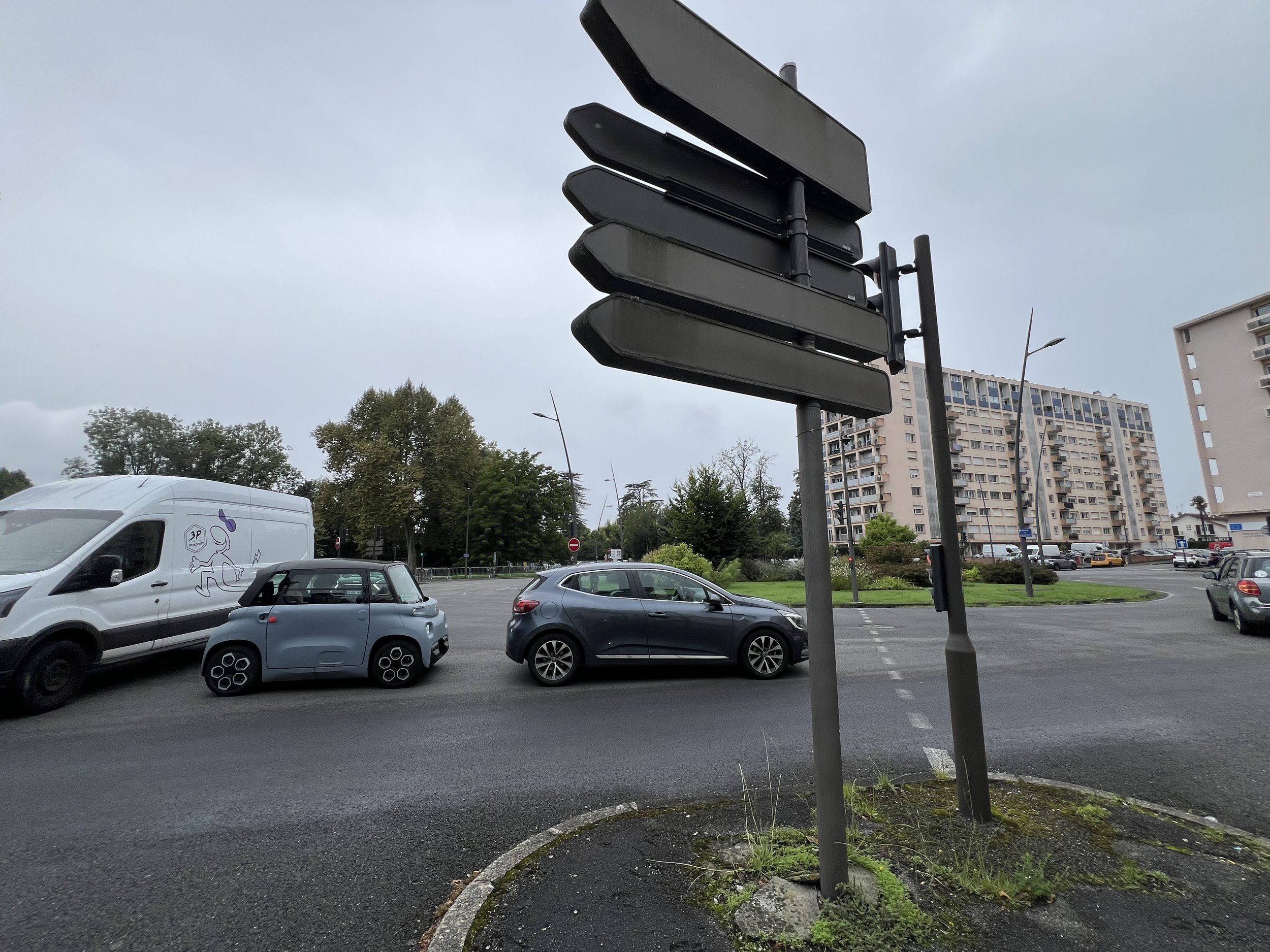Les Rond-Points
Rond Pointe Gare de Pau
Rotary, round-a-bout, or rond point…
In any language or country, traffic circles have become my nemesis. They first rose from mere nuisance to James Bond villain status while traveling on a summer educational tour across Great Britain and the Continent a year after college graduation. Not able to afford the luxury of study abroad while in school, I saved sufficient funds for the summer seminar post graduation by taking on two jobs at the college from which I matriculated: a nine-month position (later extended to permanent) creating publications for a new Department of Cooperative Education and a dormitory director position which provided free housing.
Dr. Stein, who had been my professor, academic advisor, and reader’s theater director, was leading the tour. Our somewhat stormy relationship during my co-ed years had been blessed with many highs and lows. Despite our history, he fatefully chose me as co-pilot for the twelve-seater van that would wind its way through Thomas Hardy’s Cotswalds, Dylan Thomas’ Monmouthshire, and Robert Burns’ beloved Scottish Highlands. Dr. Stein’s misplaced confidence in me was rewarded with endless circling of city and countryside roundabouts while I, panic-stricken, fumbled with a huge map to determine where we should get off the traffic merry-go-round.
My problem was three-fold. First, each spoke off a roundabout is identified by the end point of that route, and not necessarily our specific destination (both unfamiliar to me). Add to that the disorientation of traveling on the opposite side of the road and around each traffic circle in the opposite direction to which I was accustomed. Lastly, I was not blessed with the gene that senses the four cardinal directions of north, south, east, and west. This not only complicated the map reading, but also knowing where I was at any given moment. I can still hear Dr. Stein’s booming baritone bark at me, “Miss Gallo, I’m sure you’ll choose an exit anytime now!” after our second or third spin around the circle.
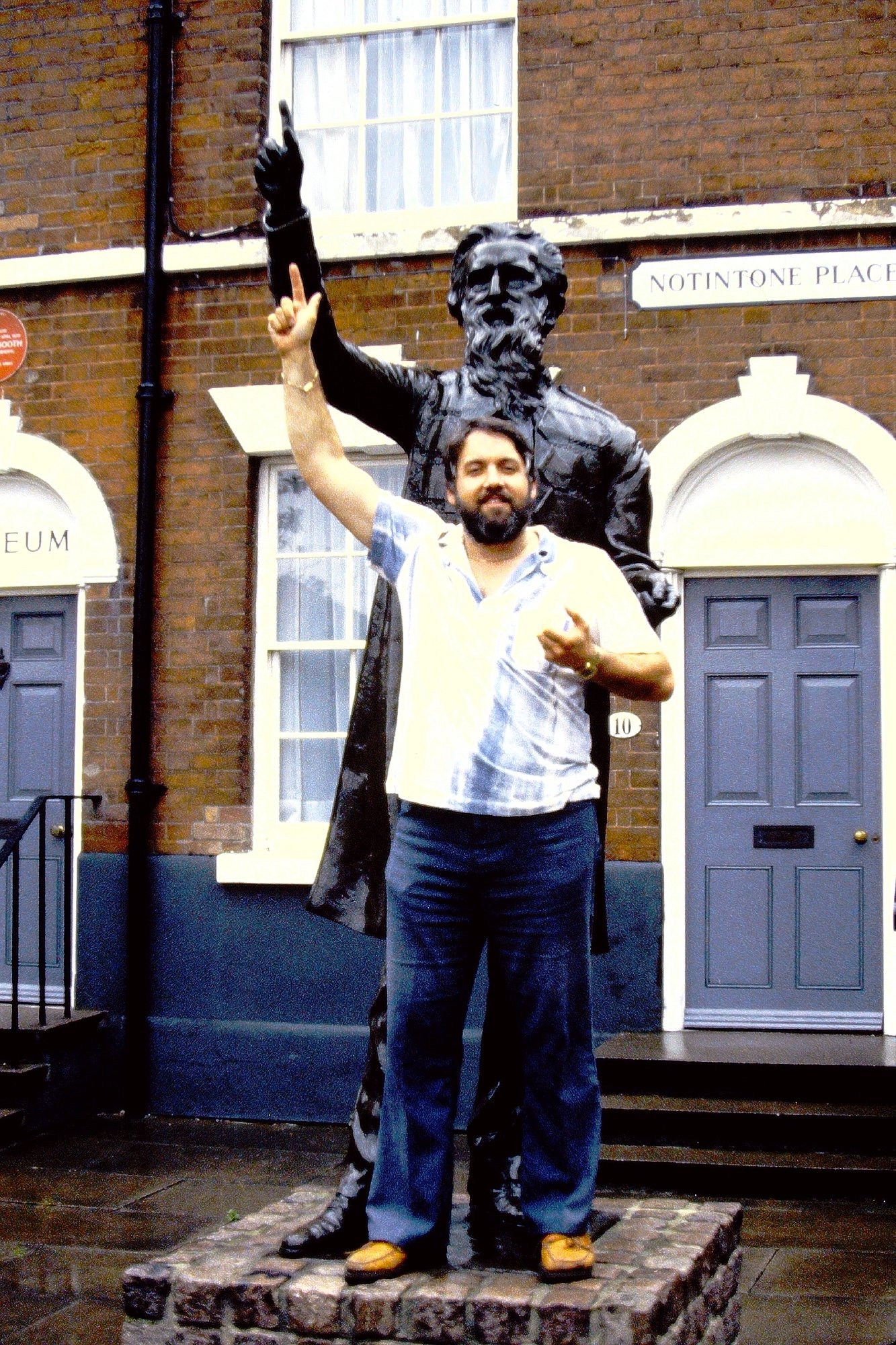
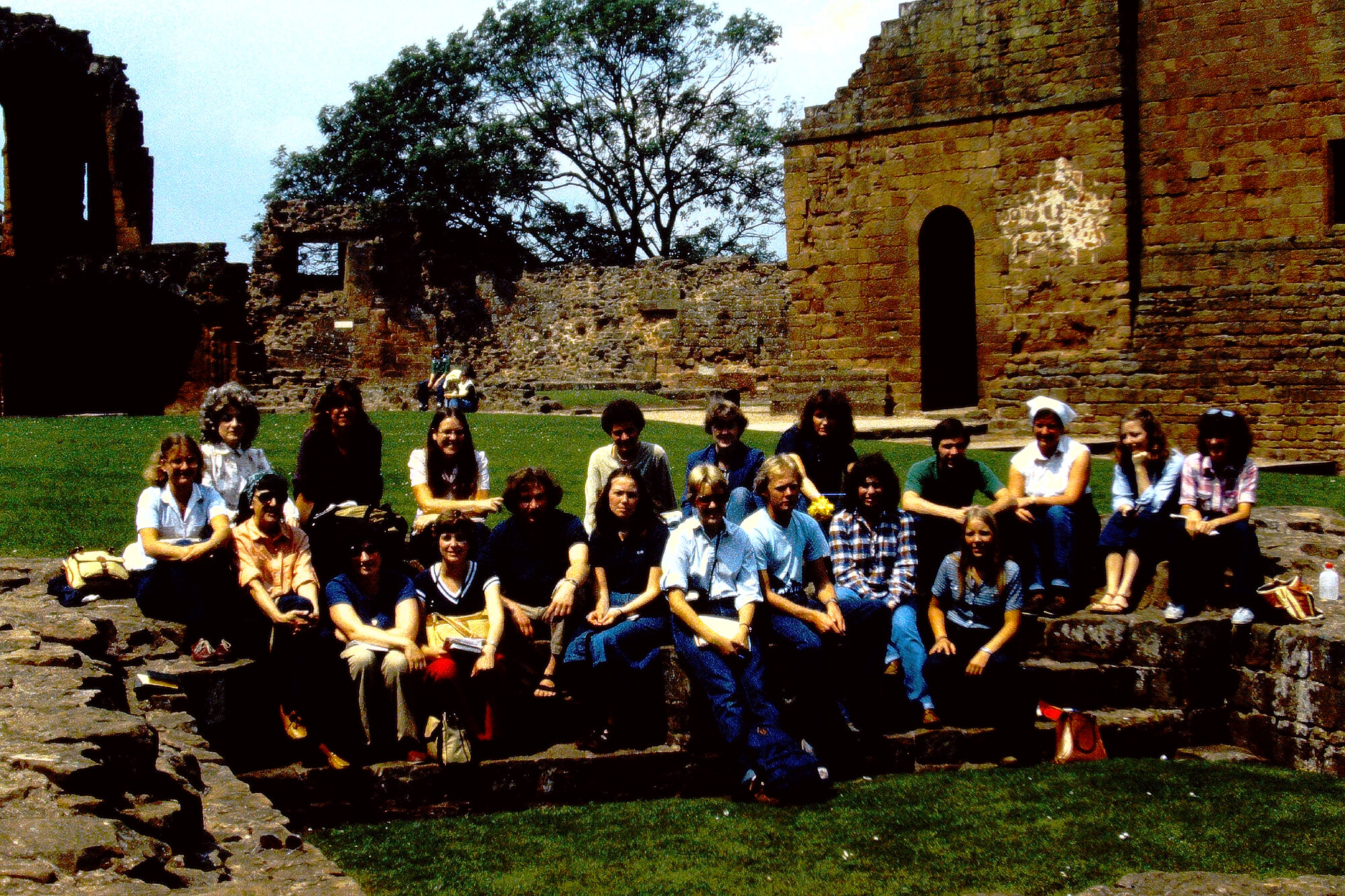
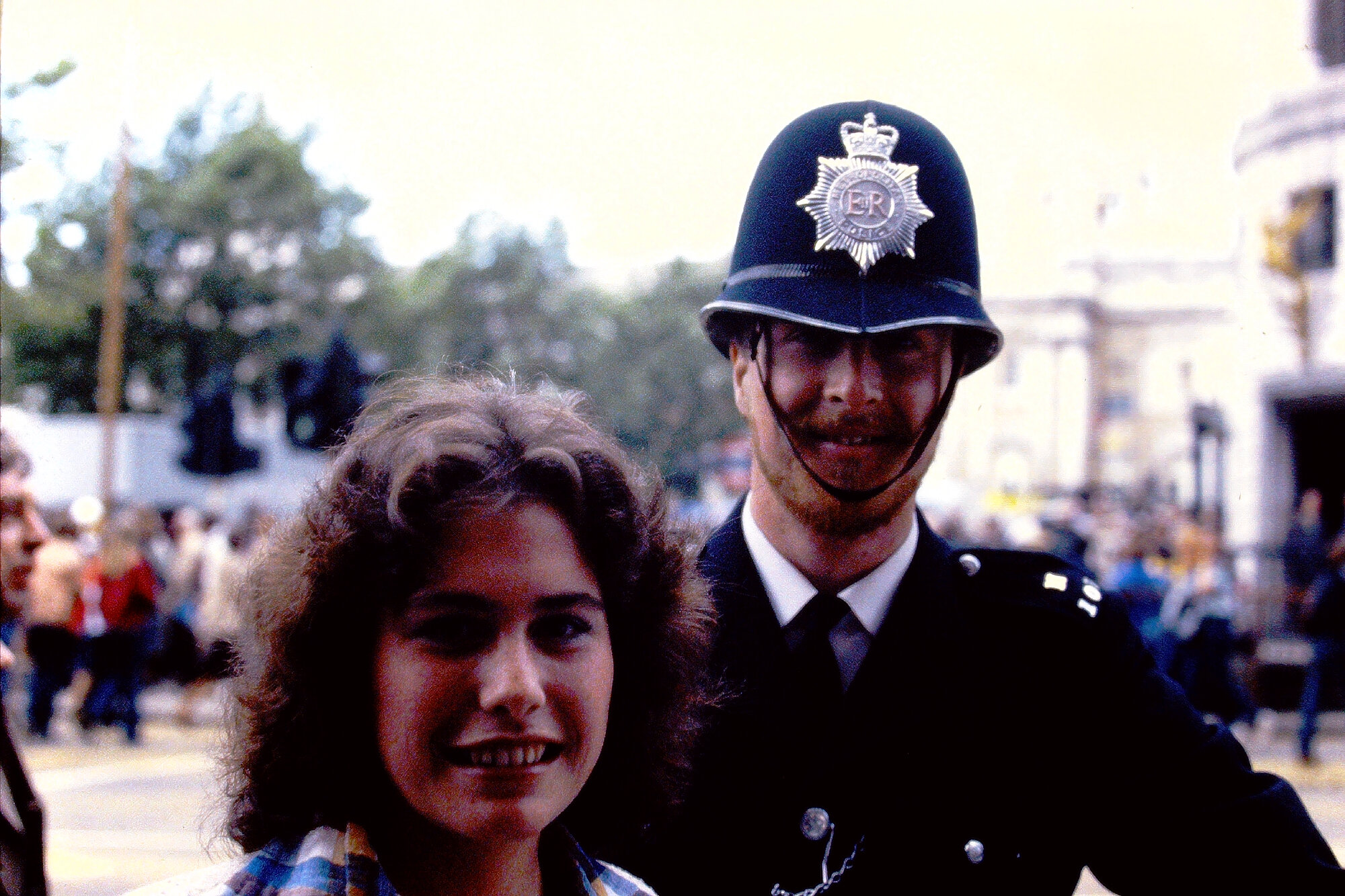
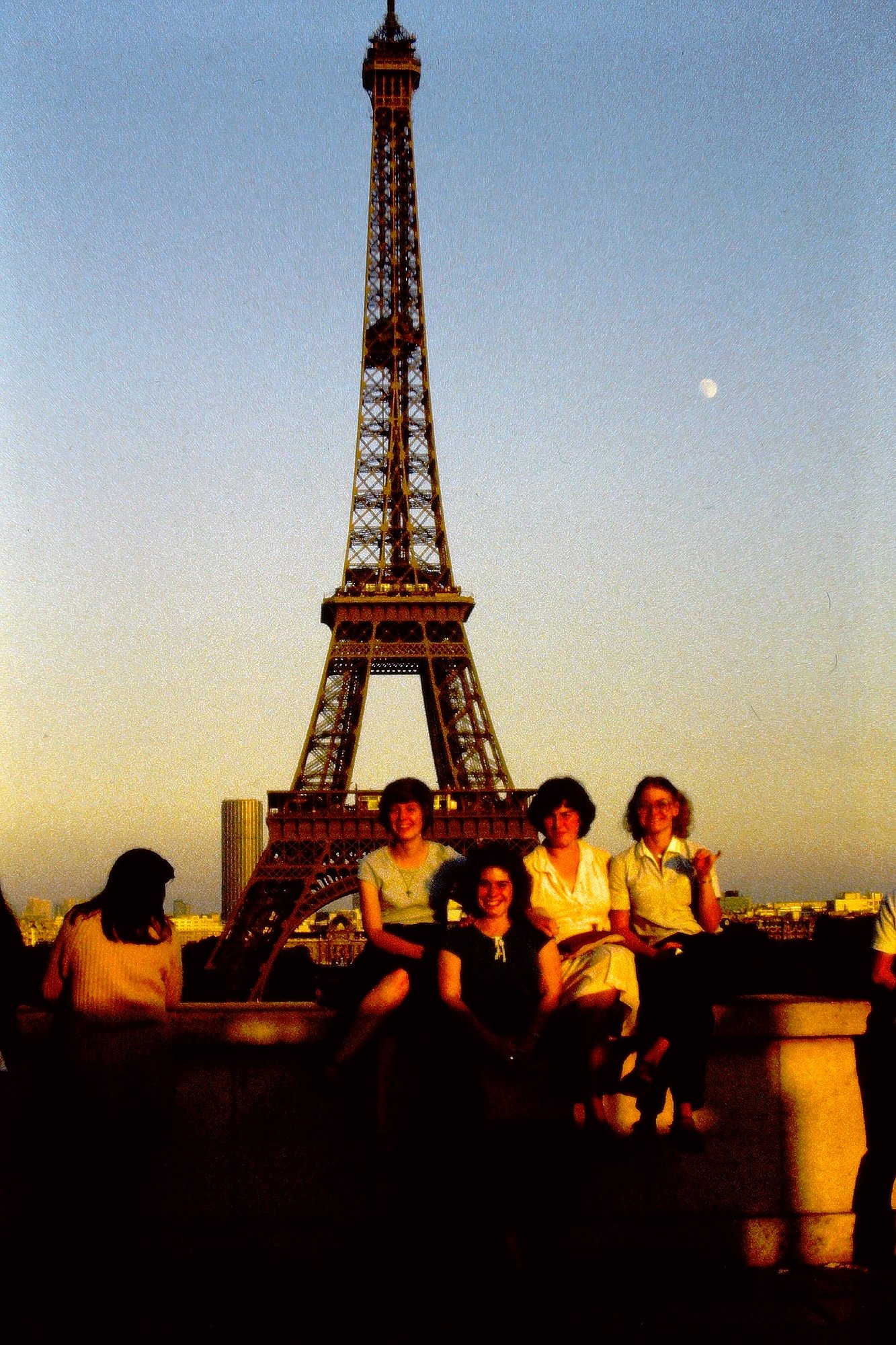



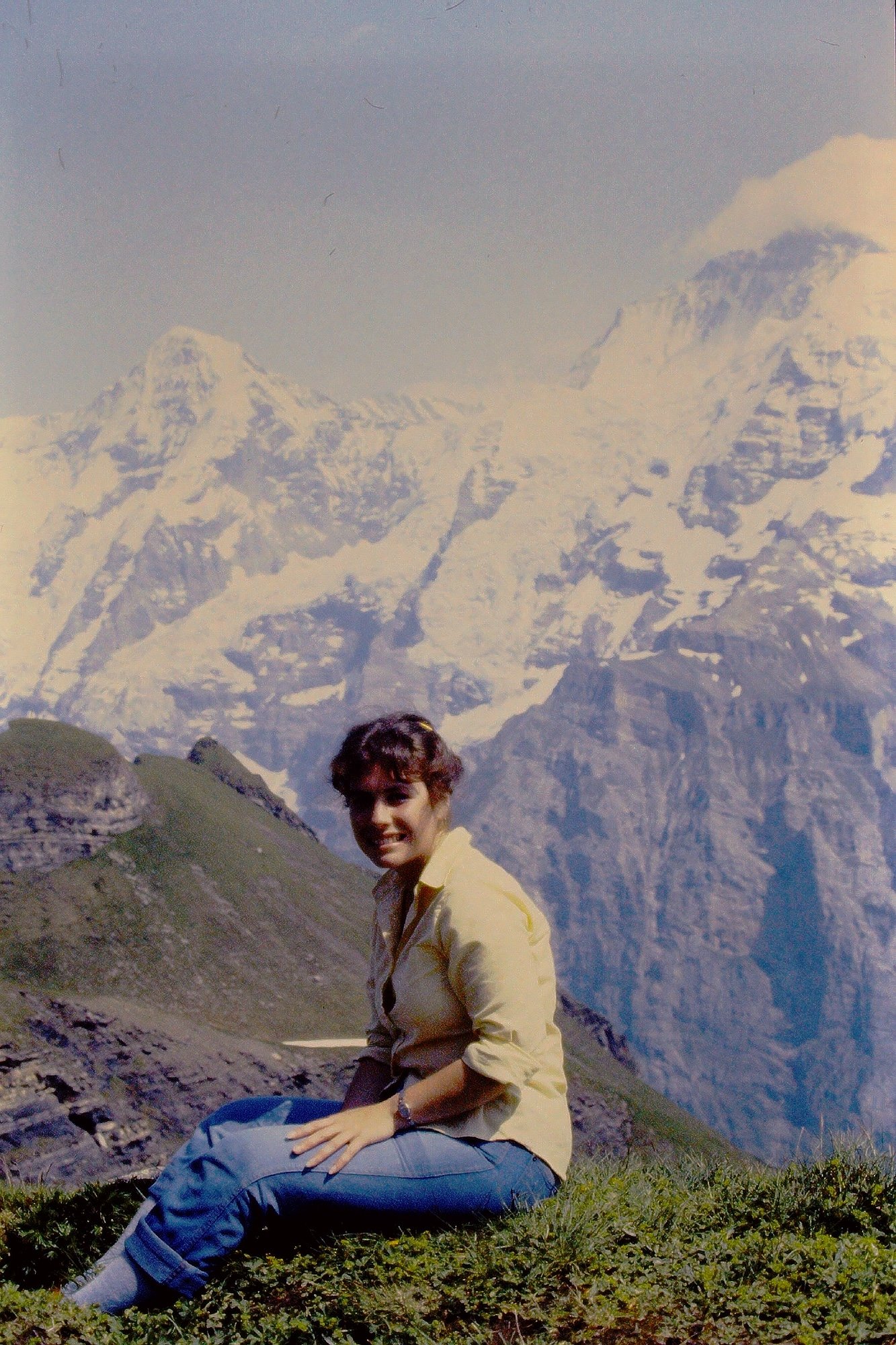
PHOTOS: (1) Dr. Peter Stein in Nottingham, England with his hero William Booth, founder of the Salvation Army (2) Lecture among the ruins at Tintern Abbey, Wales (3) Me and a handsome “Bobby” in London at the 80th Birthday Jubilee for the “Queen Mother” (4) An evening in Paris with best traveling buddies; me front and center (5) One of our two vans traveling through the magical Black Forest of Germany (6) hiking in Lauterbrunnen, Switzerland (7 & 8) Me at the top of the Eiger Mountain day of the hike
A game of chicken…
I grew up in New England, where we adopted “old” England’s love of roundabouts (what we call “rotaries”). I am well acquainted with the region’s lack of rotary etiquette. Despite a law giving the individual on a rotary the right of way, locals prefer to guess who will “chicken out” first, speed up to enter the circle, and assume that no one will collide with them while careening around and flying off the rotary without signal or other warning. I mistakenly thought this chaos had prepared me for the French “rond-points.”
À la Française…
The French approach to circuitous traffic is equally aggressive, but less lawless. Drivers generally comply with the following rules:
If you are taking the first exit on the rotary, turn on your right signal as you enter and exit the rotary.
If you are not taking the first exit, turn on your left turn signal as you approach the circle and stay on the inside lane if there are multiple lanes..
Then, before exiting the circle, signal right, shift to the right lane and exit.
Even though this takes place at unnerving speed, at least it is predicable. (The Brits do the same thing but in reverse direction without the aggression.)
Not surprisingly, our only traffic violation in France, so far, has been for “failing to signal” when exiting a “rond-point.” In fact, we did signal, but the two “policiers” on motor cycles waiting just out of sight beyond our exit, did not see the signal. That terrible sinking feeling one gets when pulled over by an officer was amplified by our inability to argue our case in French. We remain convinced that we complied with the blinker rule and that their view was compromised. However, we chose to not press the point and to respond as politely as possible with our very basic French vocabulary. This proved to be a wise decision, as within minutes the situation deteriorated.
At the time, we were still operating with American licenses; acquiring a French “permis de conduire” is required only by the end of your first year of residency. Unfortunately, that day we had no other identification with us. We had ventured out to the local home improvement store sans visa-bearing passports and we did not yet have a “carte de sèjour” (residency card) from the French government. After twenty nerve wracking minutes of calls between the officers and whoever held our fate in their hands at the other end of the line, we were kindly sent off with a warning to carry proper identification and to review the rules of the road if we wanted to avoid costly penalties on our insurance. Lesson learned.
The love of circuitous traffic…
Since then, we have discovered that France takes the love of circuitous traffic flow to an art form – both figuratively and literally. They will avoid the disruption of stop signs and traffic lights at any cost. We have come across “rond- points” that are merely a tiny painted white circle on pavement where two narrow country roads converge; so narrow that you really cannot drive around the circle but rather must go over it.
There is also an artful purpose to the rond-points of grander scale that punctuate entry to a village or city. The asphalt encircled turf may be embellished with a lush floral landscape or a thematic hardscape that proudly identifies the location’s historic or cultural contribution. Their designs often reveal a deep sense of identity like agriculture, industry, or historic significance. Sometimes they are executed with reverence and sometimes with a self-deprecating sense of humor. I’ve become so enamored, possibly obsessed, with these iconic gems that I daydream about creating a tabletop book in their honor.
Two sites that have great photos of French rond-points:
“Southern Fried French”https://www.southernfriedfrench.com/blog/2020/01/the-circle-game-french-round-abouts.html
“Topito” https://www.topito.com/top-ronds-points-bravent-conventions
However, the grande dame of rond-points is undoubtedly at Paris’s Place Charles de Gaulle where the Arc de Triomphe anchors a circle from which twelve avenues radiate. The most famous of these, the Avenue des Champs-Éysées, has eight narrow lanes (four in each direction) of its own converging on the maddening circle. In 2022 we spent a fabulous weekend in Paris to connect with dear friends Kate and Sami who had been our next door condo neighbors in Boston’s Fort Point Channel. Kate is a local Bostonian and Sami a Parisian expat. We shared much bread, cheese, and wine back in the day. Now living on separate continents, we truly looked forward to the rendezvous. A highlight I’ll never forget is flying around the Arc de Triomphe in their rental car with Sami comfortably at the wheel weaving in and out of the traffic at break-neck speed; the heart-stopping seconds reminiscent of a crazy “Mr. Bean on holiday” film.
View of the Arc de Triumph from Montparnasse Tower and Avenue Champs Èlysèe leading to the arc.
My nemesis…
Though not a match for its Parisian counterpart, our petite city of Pau also has a particularly challenging traffic circle that gradually took on mythological status among my fears. Strangely lacking in aesthetic beauty or other redeeming quality, this mongrel beast splits into four lanes and has two logic-defying traffic lights that abruptly interrupt the flow and complicate the predictable hair-raising pattern. I had only encountered the traffic monster as a passenger until the fateful day that GPS guided me to it on a solo venture. When I realized the error of my ways, it was too late for an escape route. Successfully navigating the circle without collision or whiplash, while keeping an eye on my desired point of exit amidst the rush of weaving traffic, was equally terrifying and exhilarating.
It has been nearly forty-five years since my European Seminar and many miles of road traveled now lay between me and the roundabouts of Great Britain. Google Maps and GPS have nearly eradicated their paper predecessor. Dear Dr. Stein has long ago joined the heavenly chorus of literary bards. But I like to think that he was looking down from above the day that I conquered my traffic nemesis and that he bellowed a satisfying “well done Miss Gallo.”
My nemesis.
If you would like to ask us about this post or share a similar experience, click below.




